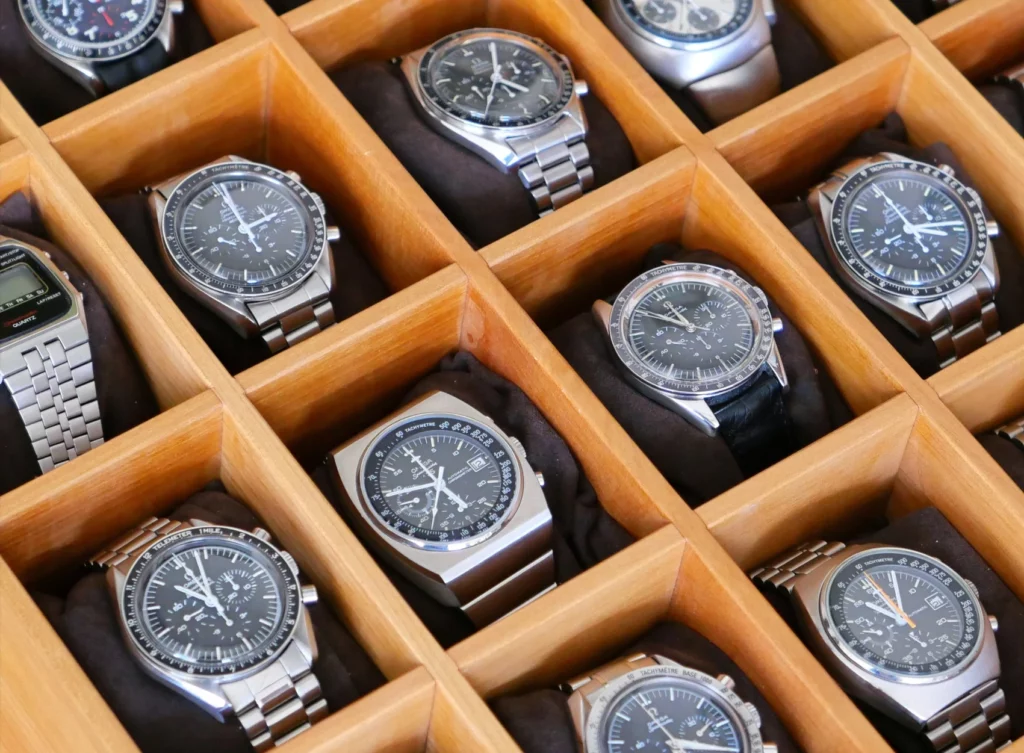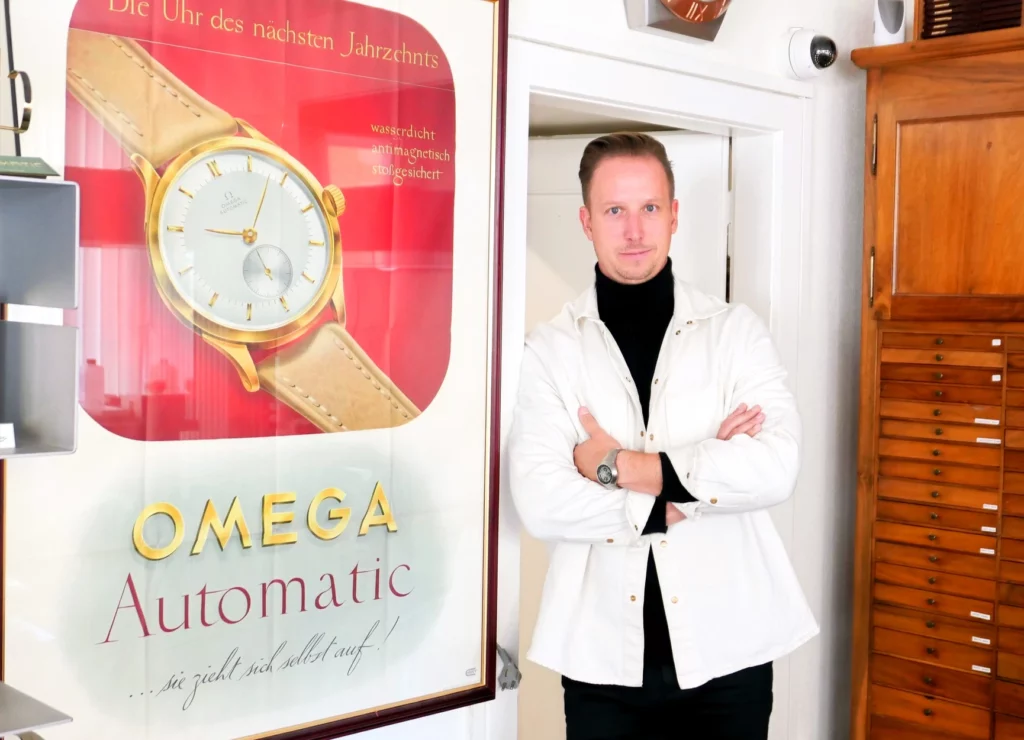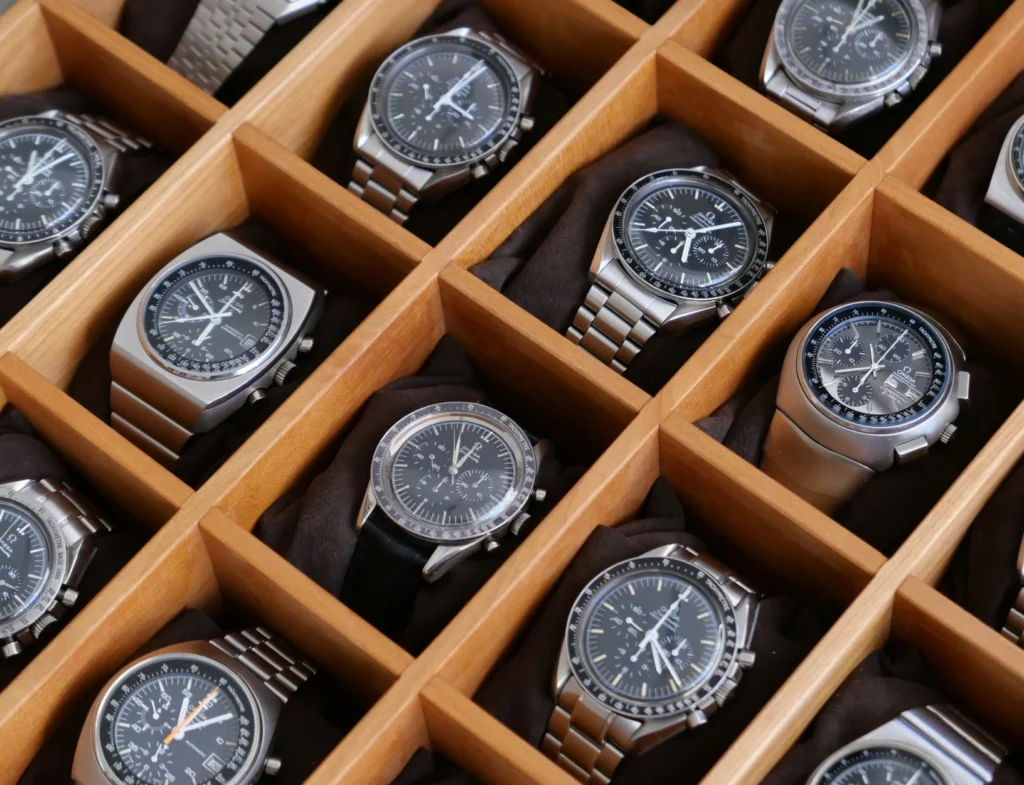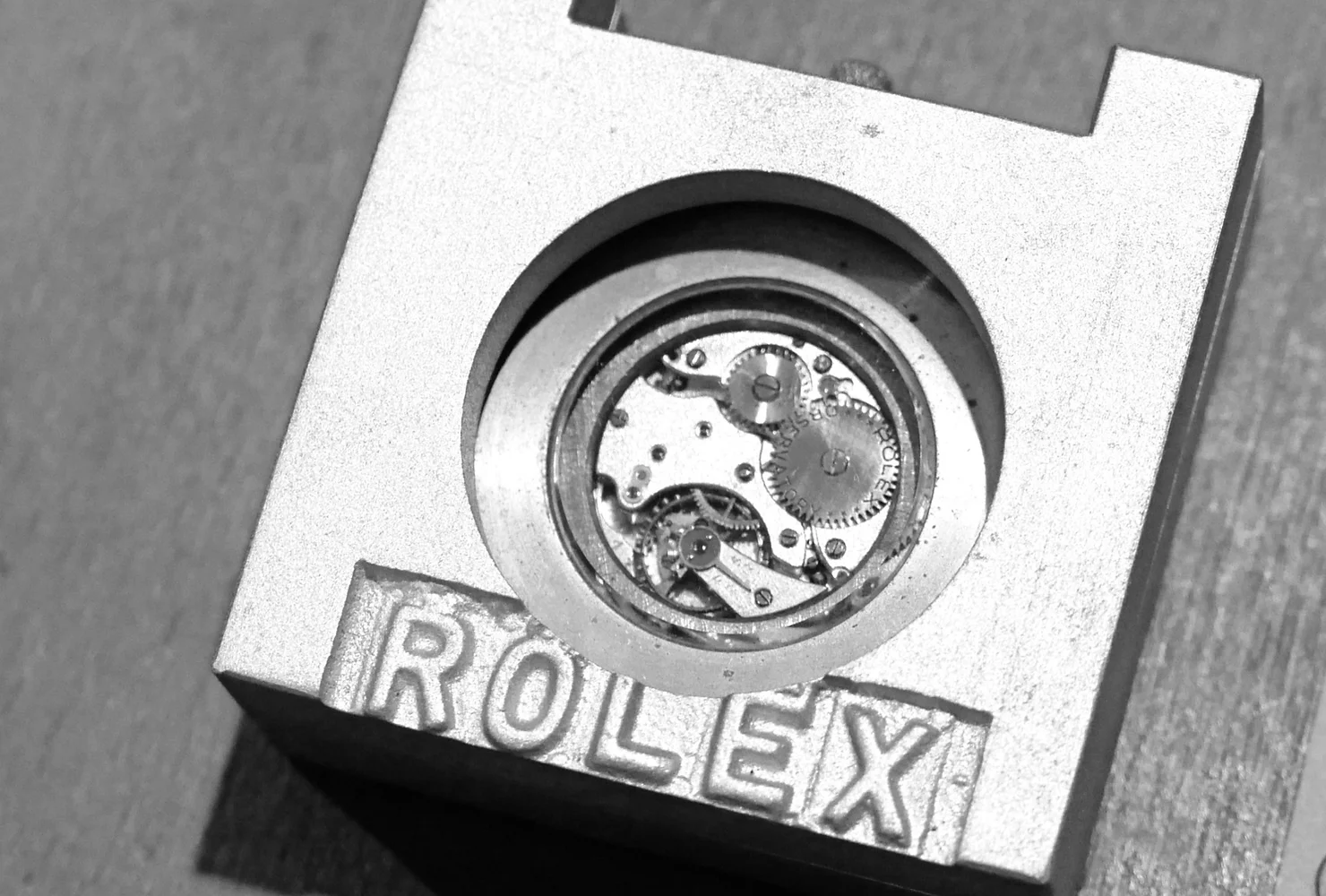
Julien Vallon likes to fly under the radar. But those who know Swiss watchmaking circles are well aware of his role as one of its important players. Like both sides of the Moon, but without a dark one, Vallon runs two distinct watch businesses in parallel, in La Chaux-de-Fonds.
One is Stila SA, a high-end case manufacturer. I got a chance to visit and was impressed by not only the top of the range industrial equipment but also the spectrum of specialized skills among its 45 employees. While Stila does not reveal its list of clients, trust me, some of the most iconic cases in the watch industry are being produced there. Vallon took over the business started by his grandfather after having himself occupied every production position over the years.
The other side of Vallon’s watch life is around Juval – a contraction of the first syllables of his first and last name. The vintage boutique was established 8 years ago, just opposite the famous Watch History Museum. A project that stemmed from Vallon’s passion for older watches, starting with pocket watches, back when he was in secondary school. As a teenager, he started trading, fixing, polishing and selling. Today, while the shop, itself decorated like a museum, is not limited to any particular brand, Speedmasters definitely stand out. Vallon has an impressive collection, both personally owned, and for sale. A testament to his expertise, Juval is also an official Omega service center.
Before we start, I’d like to extend a special thanks to the readers who contributed to the questions below: Arpan, Masscino and, last but never least, Alex N.
How did you become an expert in Speedmasters?
I always liked Speedmasters, but the expertise actually came by accident. About ten years ago, I had just purchased the former watchmaker’s workshop that would become my boutique. I found inside a set of wood boxes, dating back from the 1960s. It was full of spare parts from back then: cases, crowns, hands… Some Rado, but mostly Omega. And among them, a lot of Speedmasters. I started to do research, just to understand what parts actually went together. That helped me learn a lot over a relatively short period of time. But I must confess, sometimes, I can still be puzzled by counterfeits, and have once or twice needed to spend hours in order to authenticate a piece.
How would you describe the vintage Speedmaster market today. What are the trends compared to other years, brands and models?
The trend is most definitely upwards. There has been so much focus on the Speedmaster from collectors, but also from Omega in their product development. The new generation of Moonwatches, and its price increase, generally lifted the market value of all vintage and pre-owned Speedmasters. After all, this makes sense. The Speedmaster is arguably the most historically significant watch ever made. I always advise collectors to buy Speedmasters. Beyond the usual suspects, such as a 1969 Ed White or “straight writing” references, even previously less sought after models, like standard Moonwatches from the 1980s, now sell very well. This was not the case a few years back. Even with the current drop in the secondary watch market, Speedmasters have remained stable. Some limited editions, such as Speedy Tuesdays, are on the high.

What do you think about Omega no longer producing limited editions? Were there too many? Is demand for them on the pre-owned market high?
Some brands have clearly gone too far in taking advantage of the concept. So I can certainly understand Omega’s direction. Of course, we all know how some models, due to production capacity, still remain very difficult to obtain. On the pre-owned side, some LEs are reaching a level of demand I never suspected. The Tintin is a great example. The Alaska also really took off. What has not really gone up is the ones from the 1970s. The Speedmaster 125 for instance was produced in small numbers and is still very affordable today, compared to the rest of the market.
Have you noticed evolutions in the quality of Speedmasters over the years?
I must say that the Speedmaster was a very « well born » watch. There’s a reason it was so successful from the onset. The quality of the watches has been very consistent in terms of functionality, durability and finish over the decades. The one area where I do feel significant improvement was made recently is on the bracelets. They are generally more comfortable and better finished than before. Clearly the brand decided to invest more in that sector.
What recent Omega release had an impact on demand for vintage pieces?
If I were to name just one of them, I would say the 1957 trilogy reedition in 2017, for the 60th anniversary. That really triggered a huge amount of interest for the original versions. After that, I would say the reeditions have consistently raised demand for the originals. More recently, the Ed White 321 generated more demand for the 1969 variant.

What purchase would you advise for someone who wants to buy a watch to enjoy but also ensure they could get a good resell price?
I generally advise people to look at 1969 models. I probably sold a dozen this year already. When I can, I try to include memorabilia from back then with the watch, whether an original box or some commemorative reading about the Moon landing. The movement had already shifted from 321 to 861, but the year is so important for the Speedmaster that, in my view, it makes those watches truly unique. 1969 is somewhat the year of the « crowning » for the Speedmaster. There is also a surprising level of variety among the models, in particular when it comes to caseback engravings. Of course, we could go into more specific models with particularly high demand. A Soyuz, for instance. But such references are also more subject to volatility. I generally like to advise more stable models that perform consistently well over time.
What has been the impact of the MoonSwatch on demand for Speedmasters?
I originally thought it would be pretty negative. The months that past have proven me completely wrong. The MoonSwatch not only worked out fantastically for Swatch, but it also did great for Omega. For the young generations, it’s a way to position the brand in the very long term. And for everyone, it put the Speedmaster even further at the center of the game. Now, in airports, I see more people with Speedies than Rolex. Demand from my customers has increased to unprecedented levels. I sell twice as many Speedmasters as before.

While the evolution of price history for vintage pieces can nowadays be found, it remains difficult to have a record of the original retail price of watches…
Very true. I often get asked: « what was the past price? » We can find it for watches that are 10 and 15 years old. Beyond that, aside for some specific models, it’s a lot harder. There is no easy accessible and usable database for all main watch brands, to my knowledge. With my experience in manufacturing, I can often guess, more or less, what the original price may have been, based on the intrinsic value of production. But it’s just a guess, and certainly does not at all directly dictate market value in the world of vintage.
What is your take on recent auction records? The chocolate dial CK 2915-1 that reached 3.4 M qt Philips 1 year ago comes to mind…
There’s always a lot of things at play in those high profile auctions. Many, many factors… I personally try to have a very cautious approach, in particular when it comes to authenticity. That being said, when iconic pieces reach such heights, it’s great for the brand, shedding an often well-deserved spotlight. And regarding the CK 2915-1, I am not particularly surprised. When you see the amounts reached by some Daytonas, why not Speedies? I have sold 2915-1 Speedmasters before, even with a chocolate dial. To me, the fair price is certainly above 100k. Beyond that, in auctions, it is also very much about two egos fighting it out.

What are your personal favorite Speedmasters? Both vintage and in the current catalogue…
In general, what touches me are watches that were with me during certain moments in my life. One I am particularly attached to, not a Speedmaster but still an Omega chronograph, is a Planet Ocean, my first ever contemporary watch. In my current collection, I would say the original Ed White. More broadly, the 1969 Apollo 11 gold Speedmaster is perhaps my all-time favorite. I generally like black as a color, so the Dark side of the Moon is another obvious choice for me. And then, of course, the Chrono Chime. It’s the new grail.
What Speedmaster are you wearing right now?
A « lobster ». It’s very « made in Bienne », with its Bulova Accutron movement invented in your town. The watch is very unique. The case, the shape, the mirrored dial. And of course the fantastic bracelet. Beyond the funky looks, the watch was also one of the most precise in the world at that time.
Now to the future: How do you expect the Speedmaster to evolve over the next few years? Both in terms of the product itself, from Omega, and the vintage market…
I think the Speedmaster will reach new heights. With all the history, the investment continuously made by Omega, the renewed global awareness thanks to the MoonSwatch. It is set to become THE watch par excellence. I genuinely believe that. Hard to predict what will come next. So much has been done already. But when you look at this year, from the MoonSwatch to the Chrono Chime… Wow! This to me, shows that the Speedmaster is looking towards the future. Brands can’t just perpetually repackage the past. The technicity of the Chron Chime is mind blowing and a testament to the bright future that awaits Speedmasters.




From MoonSwatch to Chrono Chime.. well said! They really covered the whole spectrum this year!!